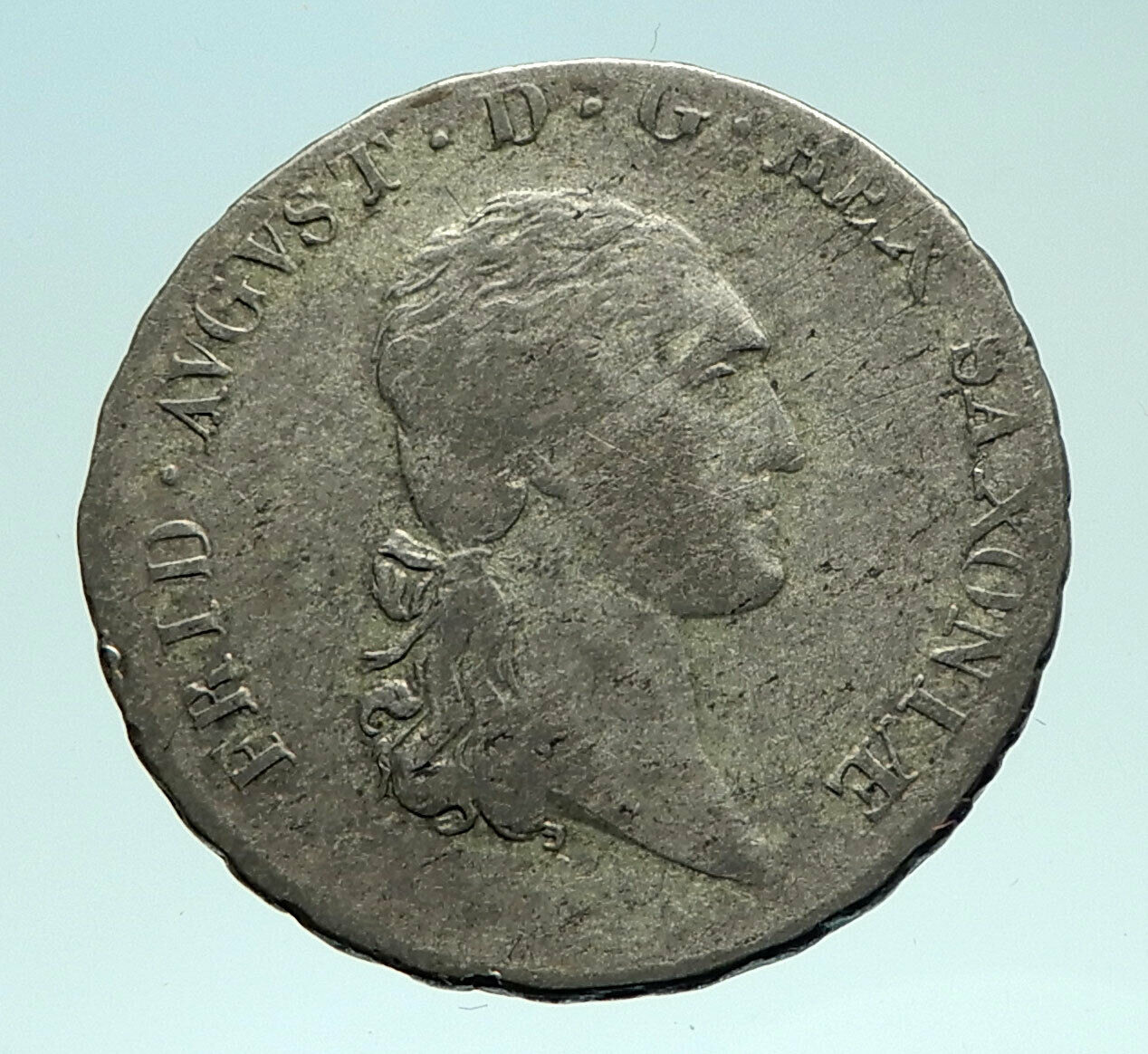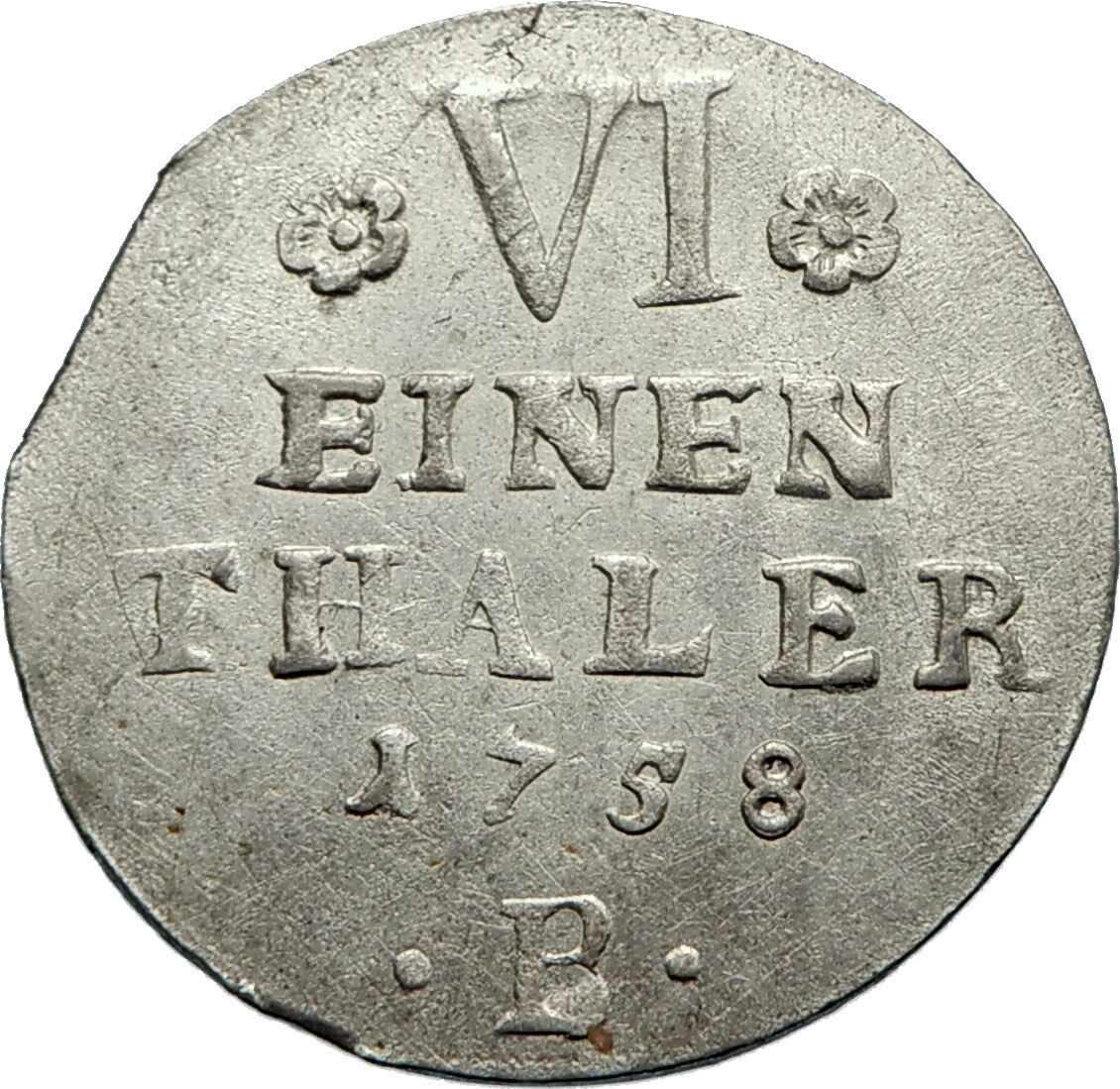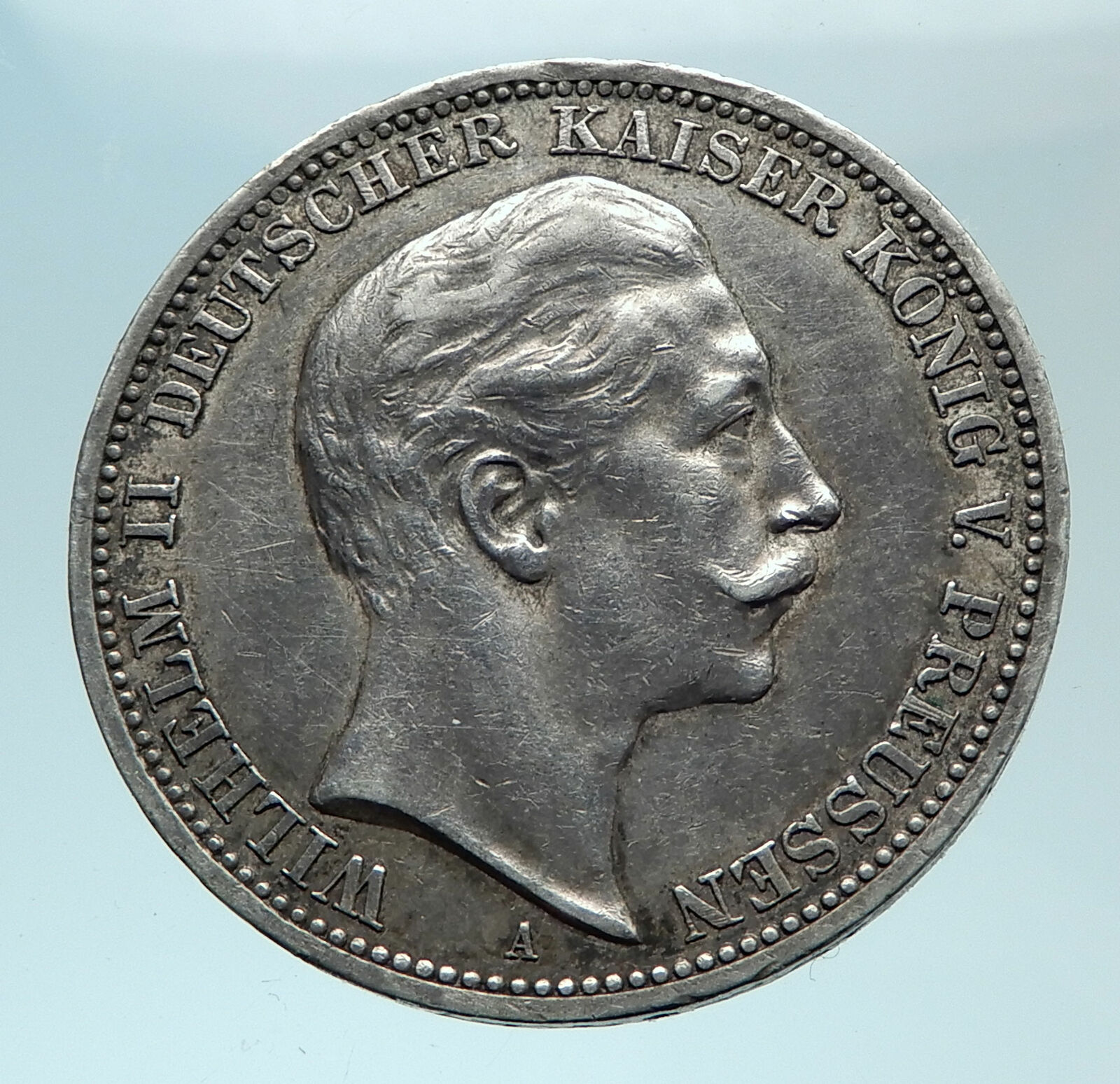|
Germany – German States. Kingdom of Saxony-Albertine
John of Saxony, 1854 -1873
1869
Copper 5 Pfennige 25mm (7.38 grams)
Reference: KM# 1218, AKS# 151 | Engraver: Gustav Julius Buschick
* KOENIGREICH SACHSEN *, Crowned Coat-of-Arms within cartouche.
* SCHEIDE MÜNZE * 5 PFENNIGE 1864 B, Vine design below.
You are bidding on the exact item pictured, provided with a Certificate of Authenticity and Lifetime Guarantee of Authenticity.
 John (Johann Nepomuk Maria Joseph Anton Xaver Vincenz Aloys Franz de Paula Stanislaus Bernhard Paul Felix Damasus) (German: Johann; 12 December 1801 – 29 October 1873) was a King of Saxony and a member of the House of Wettin. John (Johann Nepomuk Maria Joseph Anton Xaver Vincenz Aloys Franz de Paula Stanislaus Bernhard Paul Felix Damasus) (German: Johann; 12 December 1801 – 29 October 1873) was a King of Saxony and a member of the House of Wettin.
He was born in Dresden, the third son of Maximilian, Prince of Saxony-younger son of the Elector Frederick Christian of Saxony-by his first wife, Caroline of Bourbon, Princess of Parma.
Early life
During most of his life, John stood little chance of inheriting the Saxon Crown: he was preceded by his father and two older brothers, Frederick Augustus and Clement. However, in 1822 Clement died unmarried in Italy, and John was now only preceded in the line of succession by his older brother Frederick Augustus.
When his uncle Anton succeeded his older brother as king (1827), John became the third in line to the throne, and after his father Maximilian renounced his succession rights in 1830, John became in the second in line. John’s older brother became King Frederick Augustus II in 1836; now he was the first in line of succession to the throne. The King, married twice, was childless. John remained as heir presumptive during all the reign of his brother.
King of Saxony
John became King of Saxony after the death of his brother Frederick Augustus II on 9 August 1854.
The Judiciary Organization of 1855, the extension of the railroad network, the introduction of the freedom of trade are attributed mainly to his suggestion and promotion. Under his government, came the acceptance of the French Commercial Treaty (1862) and the acknowledgment of a contract with Italy. He exerted himself under influence of his minister Friedrich Ferdinand von Beust for the Great Germany Solution (de: Großdeutsche Lösung) of the imperial arrangement (under inclusion of Austria). In 1866 Saxony fought on the Austrian side in the Austro-Prussian War. Finally, after the defeat of the Battle of Königgrätz, Saxony joined the North German Confederation and in 1871 the German Empire under the hegemony of the Kingdom of Prussia. The King died two years later, aged seventy-one.
Beyond his political work, Johann was busy with literature. Under the pseudonym Philalethes he translated to German the Dante’s Divine Comedy; some parts of this work were placed in the Schloss Weesenstein. The Dresden district of Johannstadt was named after him.
 Saxony (German: Sachsen, Upper Sorbian: Sakska), officially the Free State of Saxony, Upper Sorbian: Swobodny stat Sakska), is a landlocked federal state of Germany, bordering the federal states of Brandenburg, Saxony Anhalt, Thuringia, and Bavaria, as well as the countries of Poland (Lower Silesian and Lubusz Voivodeships) and the Czech Republic (Karlovy Vary, Liberec, and Ústí nad Labem Regions). Its capital is Dresden, and its largest city is Leipzig. Saxony (German: Sachsen, Upper Sorbian: Sakska), officially the Free State of Saxony, Upper Sorbian: Swobodny stat Sakska), is a landlocked federal state of Germany, bordering the federal states of Brandenburg, Saxony Anhalt, Thuringia, and Bavaria, as well as the countries of Poland (Lower Silesian and Lubusz Voivodeships) and the Czech Republic (Karlovy Vary, Liberec, and Ústí nad Labem Regions). Its capital is Dresden, and its largest city is Leipzig.
Saxony is the tenth largest of Germany’s sixteen states, with an area of 18,413 square kilometres (7,109 sq mi), and the sixth most populous, with 4 million people.
 The history of the state of Saxony spans more than a millennium. It has been a medieval duchy, an electorate of the Holy Roman Empire, a kingdom, and twice a republic. The history of the state of Saxony spans more than a millennium. It has been a medieval duchy, an electorate of the Holy Roman Empire, a kingdom, and twice a republic.
The area of the modern state of Saxony should not be confused with Old Saxony, the area inhabited by Saxons. Old Saxony corresponds roughly to the modern German states of Lower Saxony, Saxony-Anhalt, and the Westphalian part of North Rhine-Westphalia.
|





 John (Johann Nepomuk Maria Joseph Anton Xaver Vincenz Aloys Franz de Paula Stanislaus Bernhard Paul Felix Damasus) (German: Johann; 12 December 1801 – 29 October 1873) was a King of Saxony and a member of the House of Wettin.
John (Johann Nepomuk Maria Joseph Anton Xaver Vincenz Aloys Franz de Paula Stanislaus Bernhard Paul Felix Damasus) (German: Johann; 12 December 1801 – 29 October 1873) was a King of Saxony and a member of the House of Wettin.  Saxony (German: Sachsen, Upper Sorbian: Sakska), officially the Free State of Saxony, Upper Sorbian: Swobodny stat Sakska), is a landlocked federal state of Germany, bordering the federal states of Brandenburg, Saxony Anhalt, Thuringia, and Bavaria, as well as the countries of Poland (Lower Silesian and Lubusz Voivodeships) and the Czech Republic (Karlovy Vary, Liberec, and Ústí nad Labem Regions). Its capital is Dresden, and its largest city is Leipzig.
Saxony (German: Sachsen, Upper Sorbian: Sakska), officially the Free State of Saxony, Upper Sorbian: Swobodny stat Sakska), is a landlocked federal state of Germany, bordering the federal states of Brandenburg, Saxony Anhalt, Thuringia, and Bavaria, as well as the countries of Poland (Lower Silesian and Lubusz Voivodeships) and the Czech Republic (Karlovy Vary, Liberec, and Ústí nad Labem Regions). Its capital is Dresden, and its largest city is Leipzig.  The history of the state of Saxony spans more than a millennium. It has been a medieval duchy, an electorate of the Holy Roman Empire, a kingdom, and twice a republic.
The history of the state of Saxony spans more than a millennium. It has been a medieval duchy, an electorate of the Holy Roman Empire, a kingdom, and twice a republic. 




